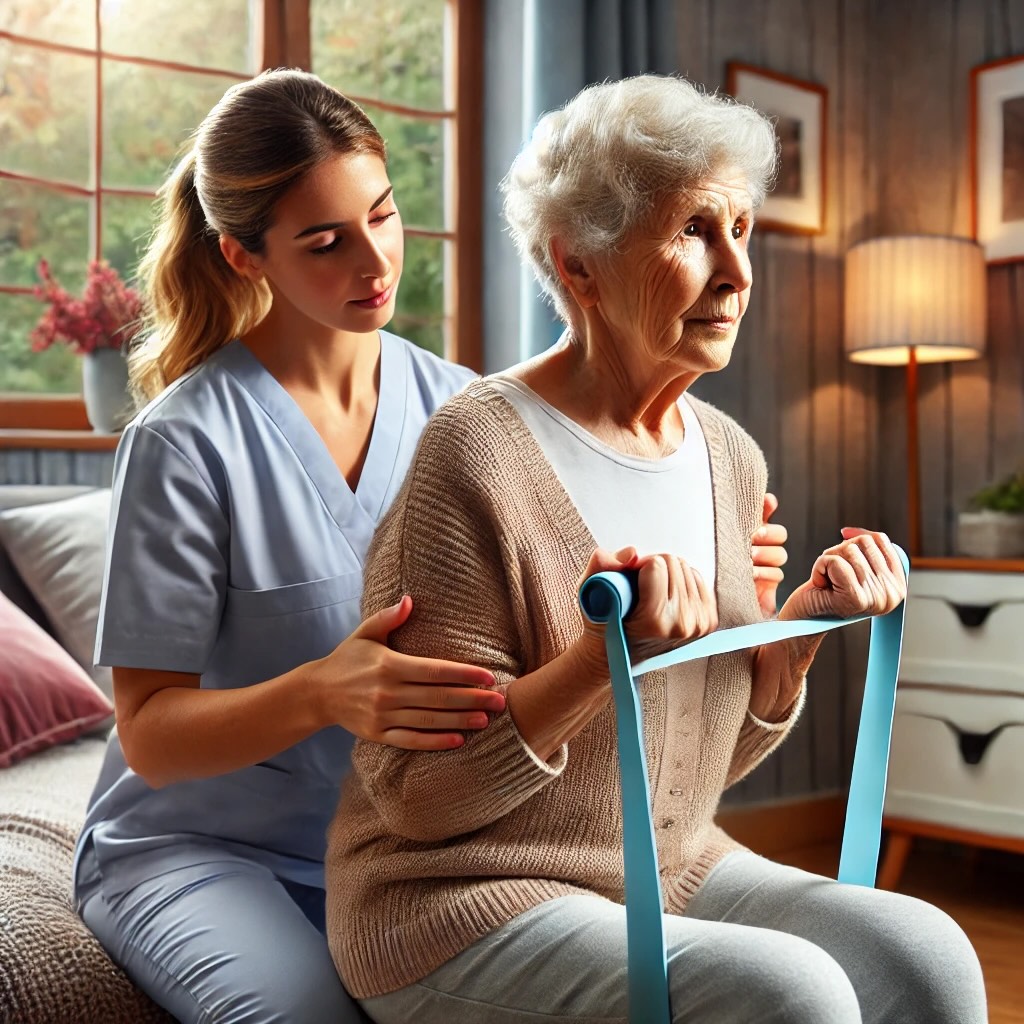Enhancing Senior Well-being:
The Essential Role of Physical Activity in Elderly Homecare
As we age, staying active becomes increasingly important for maintaining overall health and well-being. Physical activity can significantly enhance the quality of life for seniors, especially those receiving elderly homecare services. This blog post explores the role of physical activity in elderly care at home and guides you in finding the right exercises tailored to individual needs.
1. Benefits of Physical Activity for Seniors
Physical Health
Regular exercise can help manage chronic conditions such as heart disease, diabetes, and arthritis. It improves cardiovascular health, strengthens bones, and enhances mobility, all essential components of home & care strategies.
Mental Health
Engaging in physical activity releases endorphins, which can reduce symptoms of depression and anxiety. Exercise also promotes better sleep and boosts overall mood.
Cognitive Function
Studies suggest that regular physical activity can improve cognitive functions, such as memory and attention,and may help reduce the risk of dementia—key concerns for families considering care for the elderly at home.
Social Interaction
Group activities and classes provide opportunities for seniors to socialise, reducing feelings of isolation and loneliness.
2. Types of Exercises Suitable for Seniors
Aerobic Exercises
Ensure that the exercise area at home is clear of obstacles and has sufficient lighting. Use non-slip mats to prevent falls, enhancing safety in elderly homecare services.
Strength Training
Light weight lifting or resistance band exercises help maintain muscle mass and improve bone density. Focus on major muscle groups at least twice a week.
Flexibility and Balance
Incorporating stretching exercises and balance activities, such as yoga or tai chi, can enhance flexibility, coordination, and reduce the risk of falls.
Functional Exercises
These exercises mimic daily activities, such as standing up from a chair or climbing stairs, helping seniors maintain independence in their daily lives.
3. Creating a Safe Exercise Environment
Assessing the Space
Ensure that the exercise area at home is clear of obstacles and has sufficient lighting. Use non-slip mats to prevent falls, enhancing safety in elderly homecare services.
Proper Footwear
Encourage seniors to wear supportive shoes that provide stability during physical activities.
Supervision and Support
For those who may need assistance, having a caregiver or family member present can help ensure safety during exercise.

The Role of Physical Activity in Elderly Care: Finding the Right Exercise - Example training band
4. Personalising an Exercise Routine
Consulting Healthcare Professionals
Before starting any new exercise program, seniors should consult with their healthcare provider to determine suitable activities based on individual health status, ensuring the program fits within their elderly homecare services.
Setting Realistic Goals
Encourage seniors to set achievable goals, focusing on gradual progress rather than perfection. Celebrate small milestones to maintain motivation.
Incorporating Preferences
Incorporate activities that the individual enjoys, whether it’s dancing, gardening, or group classes. Enjoyment increases adherence to the exercise routine.
5. Monitoring Progress and Adjusting Activities
Keeping a Journal
Maintain a log of activities, duration, and feelings post-exercise. This helps track progress and make adjustments as needed, an important aspect of effective home & care strategies
Listening to the Body
Seniors should be encouraged to listen to their bodies. If an activity causes pain or discomfort, it’s important to modify or stop the exercise.
Regular Check-Ins
Schedule regular check-ins with healthcare providers or fitness professionals to assess physical health and adapt the exercise program as necessary.
6. Incorporating Technology into Exercise
Fitness Apps and Wearables
Encourage the use of fitness apps or wearable devices to track physical activity and provide reminders for workouts.
Online Classes
Many platforms offer virtual exercise classes specifically designed for seniors, making it easier to stay active from home.
Video Tutorials
Provide access to instructional videos that demonstrate safe exercise techniques, ensuring proper form and reducing injury risk.
Physical activity plays a vital role in elderly care, especially for those receiving elderly homecare services. By understanding the importance of staying active and finding the right exercises tailored to individual needs, seniors can enjoy improved physical health, mental well-being, and greater independence. Emphasising safety, personalization, and enjoyment will help create a sustainable exercise routine that supports healthy ageing. Encourage your loved ones to embrace an active lifestyle, and witness the positive impact it can have on their lives!
Don't know where to start?
Please contact us any time and we will be happy to assist you during this process.
